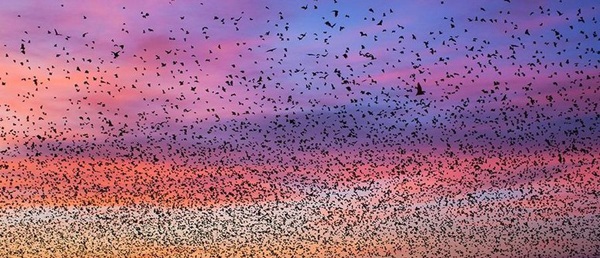Showing posts with label Nature and Science. Show all posts
Showing posts with label Nature and Science. Show all posts
Friday, July 26, 2013
Seaweeds in the Mediterranean 200 thousand years old!!
Says the world (Carlos Duarte Carlos Duarte) from the University of Western Australia that the reason for offering these weeds in a lifetime back to being multiply manner asexual by reproducing itself as it produces new branches of large-size large numbers slowly storing food that they can continue to live inin bad conditions.
Astronomers discover a planet at least three of diamonds
Astronomers discover a planet at least three of diamonds
Astronomers discovered a planet twice the size of the diamond planet is the main ingredient which revolves around a star can be seen with the naked eye.
And spins planet rock dubbed astronomers name "Kankera 55" around a star like the sun on a 40 light-years away, and the light-year is the distance light travels in a year and an estimated 9.46 trillion miles, and no planet in a range of cancer and spins very quickly make the year in which expire within 18 hours, only accounts for the planet.
He discovered a research team of U.S. French planet that has a diameter twice the diameter of the Earth and reach mass to eight times the mass, and gives the planet the same density of the Earth, although planets diamond observed by the thought denser much, and is characterized by the planet also strongly temperature as the temperature reaches the surfaceto 1648 degrees Celsius.
And said Nico Madehosodhan the researcher at Yale University who is due to publish the results of his research in the journal (Astrophysics), "the surface of this planet probably covered with graphite and diamonds no water and granite."
The study estimated that participated in Olivier Muasis, a researcher at the Institute of Astrophysics in Toulouse, France, that a third of the mass of the planet, at least - an estimated three times the mass of the earth - a diamond may be, according to the reported news agency "Reuters".
And discovered by diamond planets was the key element, but this is the first time where discovers a planet orbiting a star like the sun, which is subject to a detailed study of this form.
8 million bat migration from Kanasa Park African Republic of Zambia
8 million bat migration from Kanasa Park African Republic of Zambia

It's hard to see the sky amid a scene repeated only once a year, and this scene appears when you fly more than 8 million bat in one of the largest migrations of mammals in Africa and also the most exciting.
 Did not find a bat fruit that reaches over the wings to 6 feet of any meters and eighty centimeters, but to live on a patch of land small an area of about 4050 square meters in a small corner of the park, "Kanasa" national, after the return of the bat to her home after caught daily, carrying every treeup to 10 tons of bats, making the area one of the most densely crowded warm-blooded mammals in the world.
Did not find a bat fruit that reaches over the wings to 6 feet of any meters and eighty centimeters, but to live on a patch of land small an area of about 4050 square meters in a small corner of the park, "Kanasa" national, after the return of the bat to her home after caught daily, carrying every treeup to 10 tons of bats, making the area one of the most densely crowded warm-blooded mammals in the world.
 Did not find a bat fruit that reaches over the wings to 6 feet of any meters and eighty centimeters, but to live on a patch of land small an area of about 4050 square meters in a small corner of the park, "Kanasa" national, after the return of the bat to her home after caught daily, carrying every treeup to 10 tons of bats, making the area one of the most densely crowded warm-blooded mammals in the world.
Did not find a bat fruit that reaches over the wings to 6 feet of any meters and eighty centimeters, but to live on a patch of land small an area of about 4050 square meters in a small corner of the park, "Kanasa" national, after the return of the bat to her home after caught daily, carrying every treeup to 10 tons of bats, making the area one of the most densely crowded warm-blooded mammals in the world.This has been found "Lucas" that bats leave her home in the tops of the trees when the sun to come back with the dawn to sleep. He believes that the number of bats that are involved in the migration is more than the number of bulls and zebras African collected. It is worth mentioning that this kind of color bat like a straw, a subspecies of "fruit bat" found in most parts of sub-Saharan Africa. The large amount of fruit that feed on these organisms allow them access to the weight of 311 grams. And live for about 30 years.
Subscribe to:
Comments (Atom)




























